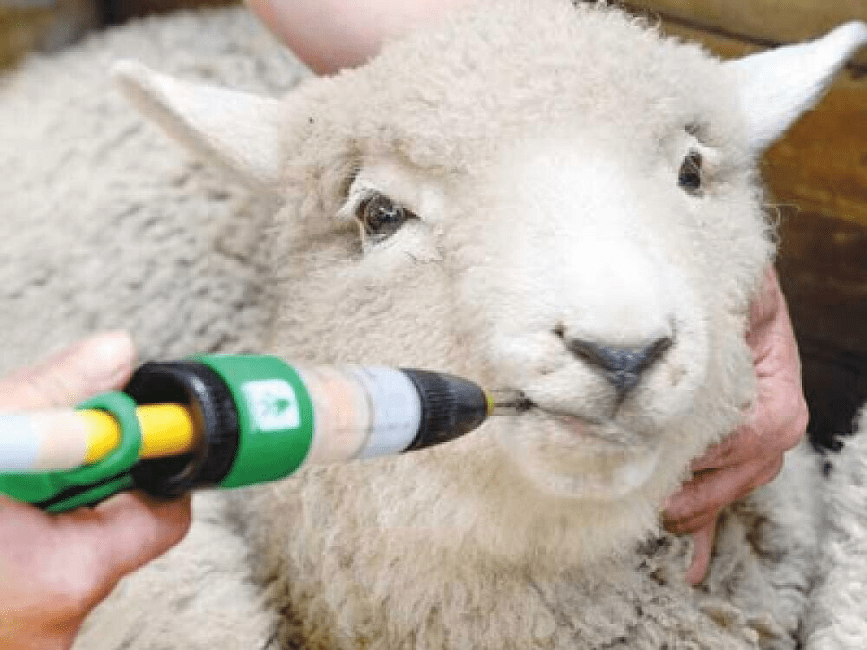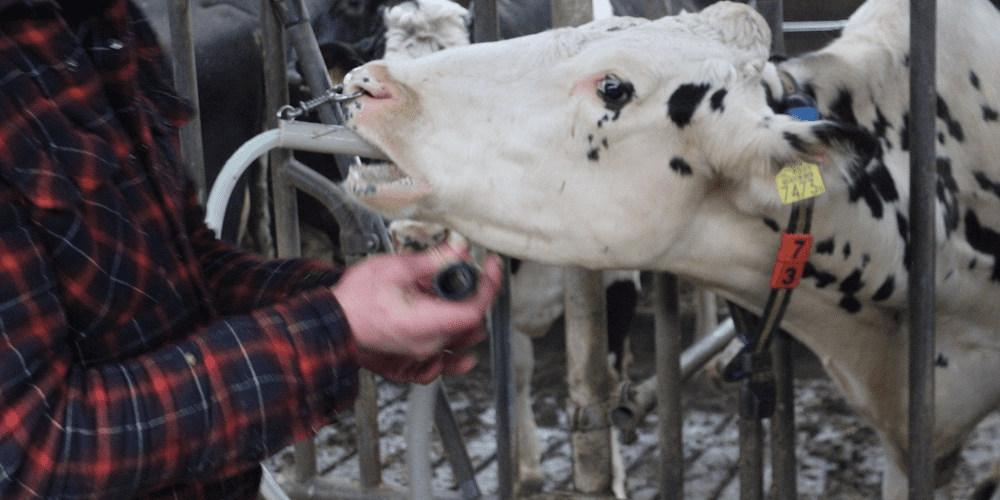Deworming also called worming or drenching is the process of giving a medicine (called an anthelmintic, wormer, dewormer, or drench) to a person or animal to get rid of parasites like roundworms, flukes, and tapeworms.
Animal drenching or deworming can also be referred to as the process of administering medication to animals to eliminate internal parasites, such as worms, from their bodies. These parasites can live in the stomach, intestines, or other internal organs of the animal and can cause health problems, including poor growth, weight loss, and reduced productivity.
Drenching involves giving the deworming medicine orally, usually in liquid form, using a special drenching gun or syringe. This ensures that the medication reaches the animal’s digestive system, where it works to kill and expel the parasites.
Deworming is an essential part of animal care because it helps maintain the overall health and well-being of livestock, leading to better growth rates, improved fertility, and higher production of meat, milk, or wool. Regular deworming also helps prevent the spread of parasites within a herd or flock.
Procedure for Animal Drenching or Deworming
1. Pour the liquid into a bottle with a long neck or attach a short piece of plastic or rubber tubing to the neck of the bottle. A long-necked wine bottle works best for this, but a Coca-Cola bottle can also be used.
2. Hold the sheep standing up with its head slightly raised.
3. Place the end of the bottle or tube into the back of the sheep’s mouth, above the tongue.
4. Tilt the bottle so the liquid flows slowly into the sheep’s mouth and is swallowed.
5. Sometimes, a pill or bolus can be given by placing it at the back of the sheep’s mouth with your fingers and pushing it down the esophagus. If you need to treat many sheep, using a commercial balling gun is easier.
Read Also: Importance and Methods of Deworming or Drenching Animals
Advantages and Disadvantages of Drenching

Advantages of Drenching
1. Effective Treatment: Drenching can effectively eliminate a range of internal parasites, improving the health and productivity of the animal.
2. Easy Application: It’s a straightforward method for administering medication, especially when using a long-necked bottle or commercial drenching equipment.
3. Targeted Dosage: Allows precise control over the dosage of the medication given to the animal.
Disadvantages of Drenching
1. Stress on Animals: The process can be stressful for the animals, particularly if they are not accustomed to handling.
2. Risk of Misapplication: Incorrect technique or dosage can lead to ineffective treatment or harm to the animal.
3. Requires Handling: Drenching needs proper handling and restraint of the animal, which may be challenging and labor-intensive.
4. Potential for Resistance: Overuse or improper use of dewormers can lead to parasite resistance, reducing the effectiveness of the treatment over time.
In summary, Drenching (Deworming) involves administering a medicine to eliminate parasites like roundworms and tapeworms from humans or animals. For sheep, this is typically done by using a long-necked bottle or tube to deliver the liquid medication into their mouth. Alternatively, pills can be given manually or with a balling gun for larger groups of sheep.
Read Also: The Different Types of Manure and How they Work

